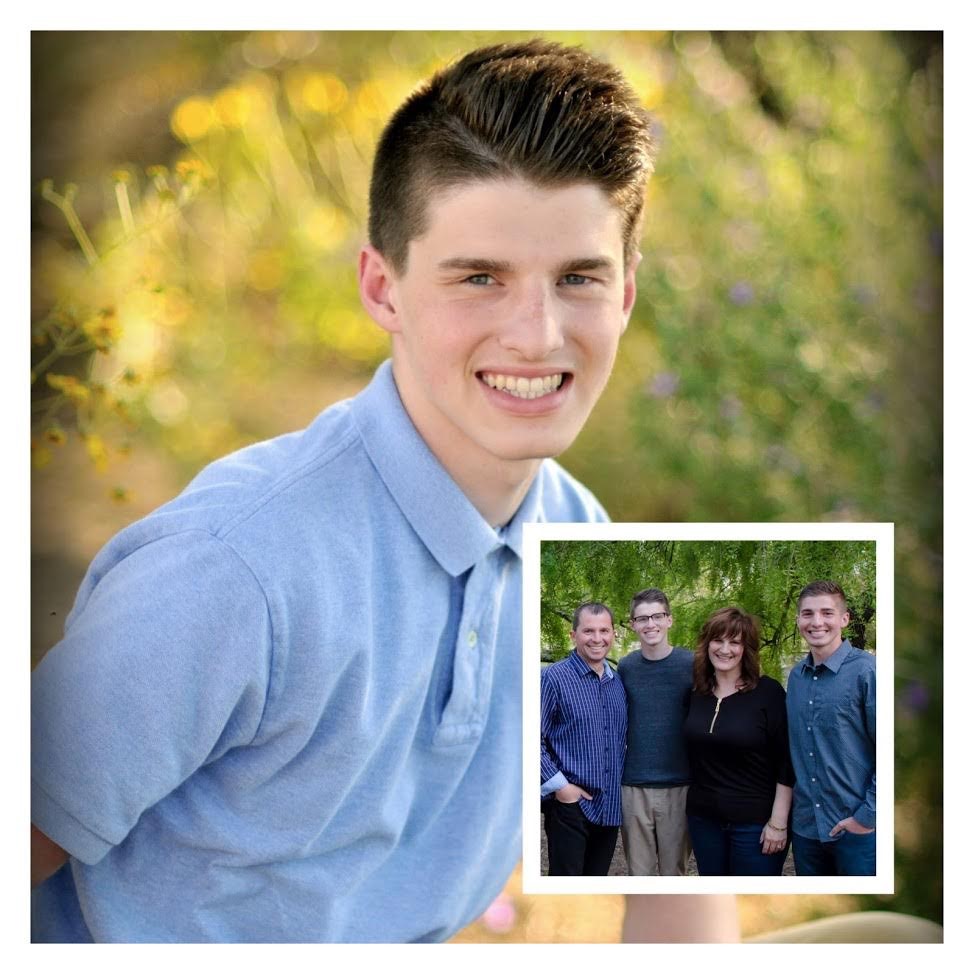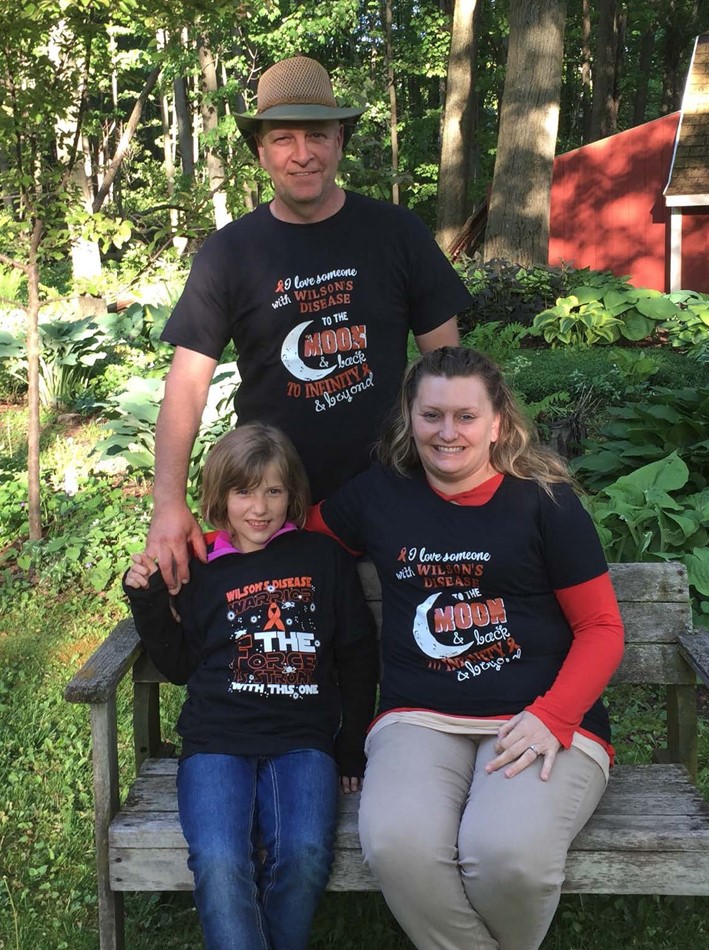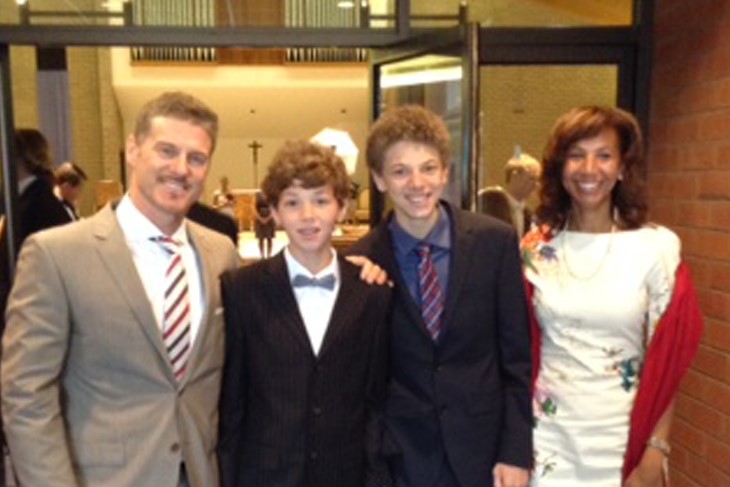
Sarah And Blake Herrman
From the beginning symptoms of small tummy aches as an 9 year old, to a liver biopsy and a diagnosis in March 2009 that rocked our world, Blake is resilient. Now 18, and a recent high graduate, Wilson’s Disease isn’t winning. Medications, food allergies, a supportive family, friends, and prayer is what makes this adjustment to life possible.
We walk for Wilson’s Disease to thank those who have supported Blake, to meet other patients and families in Arizona who understand, and to bring awareness to this orpha n disease that has affected so many.

Izzy Hoffman
I’m Izzy Hoffman and I was diagnosed with WD when I was 14 years old. I was a perfectly healthy athletic kid, rarely missing a day of school. In February of 2015 I came down with a sinus infection. My mom took me to the doctor and I was prescribed an antibiotic and felt better for a few days, then I became sick with the same symptoms. By March I was really sick and barely able to get out of bed. My doctor thought I had mono and ran labs to verify. When the labs came back the results were negative for mono, what concerned my doctor was my liver function test was extremely high and my white count was low. More test were run and my doctor consulted with a rheumatologist and a hematologist. Both doctors thought whatever I had was viral. Weeks went by and I was getting worse not better. My mom insisted to my doctor that we continue to look for answers. My family started to call me Sleeping Beauty because all I did was sleep.
Our primary doctor sent us to Dr. Flynn, an infections disease Disease doctor. Dr. Flynn checked my ceruloplasmin which was very low. This was our first link to WD. Dr. Flynn sent us to a Pediatric GI doctor, Dr. Cameron. He decided I needed a liver biopsy. I had a liver biopsy at Bronson Hospital on May 28, 2015. When the results came back he was not able to make a diagnosis and consulted with Cincinnati Children’s Hospital. CCH called my mom and said they could see us the next day. We quickly packed the car and drove 5 hours to Cincinnati. The next day was full of tests and another liver biopsy. I spent the night in the hospital and the next day we drove home.
On June 16, 2015, we received the official diagnosis of WD.
I was relieved to get a diagnosis and start on medication. I thought it would be like being on an antibiotic and within a few days I would feel better. That has not been the case for me and it’s been a long, slow road to regaining my health.
I take Syprine for WD. I was also diagnosed with Ehlers-Danlos Syndrome about 8 months after WD. I have a mild form of Ehlers-Danlos, but because I was sick and inactive for so long with Wilson’s Disease the Ehlers-Danlos caused my blood vessels to become elastic and I have a hard time pumping blood back to my heart. I now get IV infusions to increase the volume of my blood. The IV’s have been very helpful in making me feel better.
I’ve learned to live my life one day at a time. I will not let Wilson’s disease define me! You must be your own advocate and educate people about your disease.
Having an invisible illness is extremely difficult. I get really frustrated by how fatigued I get. I must analyze my week and if I want to do a big activity on Friday then I will need to take it easy on Wednesday and Thursday. It’s frustrating that I can’t lead a life of a normal teenager.
Educate yourself on the symptoms of Wilson’s Disease. Wilson’s specialist feel over ½ of the cases of Wilson’s Disease goes undiagnosed. Through the WDA and The Big WOW we can bring awareness to this disease and save lives.
Not long after I was diagnosed with WD my mom saw the video for The Big WOW. It was the first time we felt people were describing what I was experiencing. When you search the internet for WD the results are rather generic and seem to say take some medication and you will live a normal life. Wilson’s Disease just isn’t that simple, with it being so rare there just isn’t a huge base to say what is normal. So, if you are newly diagnosed I would recommend sharing the video the Simopolisis family put together with your friends and family to help them understand how diverse this disease is. My mom shares this the video and gives a link to the WDA website to my teachers and coaches at the start of each school year.
My goal is to be a doctor. I know this will be extremely difficult as I continue to recover. What I try and focus on is what has been made possible that wouldn’t be possible if I didn’t have Wilson’s. I’ve met many wonderful people in the medical field. I feel as a doctor I will have compassion and a relatability that I wouldn’t have if it weren’t for Wilson’s Disease.

Michelle Houle
Our lives were turned upside down when our daughter Shaylee, at age 5, was diagnosed with Wilson’s Disease on January 15, 2016.
She has been in and out of the hospital with illnesses and no diagnoses. Her liver enzymes were off the charts with no explanation. Finally with some pushing from mom the doctors were willing to listen to her concerns and do a liver biopsy. The doctors didn’t know much about Wilsons Disease and when she was diagnosed with it we were sent to Children’s Hospital of Milwaukee.
Shaylee is now 7 and doing well. She eats a well balanced low copper diet, medication to chelate her liver and vitamins to replace the ones that are low due to the medication.
We want to help educate others about this rare disease.

Steven And Mauricette Howlett
In the summer of 2014, our lives got turned upside down. Our 14 year old son, Harrison, was showing strange signs of awkwardness, slurred speech and drooling. He had just “shot up” a few inches in height and it seemed that with this growth he had become an “awkward teen”. While these changes seemed a little excessive he was truly getting tall and gangly. His slurred speech and drooling we thought must be from his new braces. And yet, to us, it was a little unsettling…something didn’t seem right. Were we overly concerned? Were we seeing more than what was there?
Every day we seemed to say: “Harrison sit up straight!”, “Close your mouth and stop drooling!”, we continually hounded him. We felt that he wasn’t making an effort and we felt bad about it. He was also not himself. He was lethargic on stage when he performed his music and he just wasn’t very responsive when playing hockey. At one point he was diagnosed as having ADD.
Then one day we noticed a tremor in his arm and this, we could not attribute to puberty, growth spurts or anything normal. When the pediatrician checked him out, she could find nothing. “He seems normal,” she said, “but that tremor is strange”. As a precaution, she sent us to a pediatric specialist who did her own tests but said the same thing: “He seems normal but that tremor is strange.” And so she ordered an in-depth blood test, thinking that nothing would result.
When the blood was tested, they called us and had us bring him immediately to Toronto Sick Kids Hospital emergency care where we were told a Neurologist would be waiting for us. There, they wanted to perform an MRI scan of his brain, thinking that there may be a tumor. They also called in an Oncologist preparing us for a spinal tap to be done. Harrison felt like he was “in a dream” but for us it was a nightmare. The MRI did not appear to show anything until the Radiologist took a second look and noticed that a part of Harrison’s brain showed atrophy. The Radiologist and Doctors collaborated and swiftly confirmed the diagnosis: Harrison had Wilson’s Disease. This was seemingly better than a brain tumor or cancer we thought, but we had never heard of Wilson’s Disease, and how bad could it be? This was to start our new journey as a family…to understand, to learn and to cope with Wilson’s.
It continues to be a journey of discovery but we are learning not just about the disease but also about the challenges: the challenges of access to costly medications, of navigating the health care system, of misdiagnosis, of treatment and of the need to have support. Support of not only one another, but as a family and as a community. Wilson’s is not going away and remains misunderstood. And there is uncertainty about how much Harrison will “bounce back”. But with medicine and therapy, we see that his condition has already improved somewhat and he has become diligent in his effort to ensure that he eats foods low in copper.
We would love to see a strong Canadian chapter of the WDA, an organization that has provided us with invaluable support and is our only true advocate.
Donations
Your support allows the WDA to maintain this website, produce educational materials, support research, and hold meetings for people living with WD, their families, and the healthcare community.
Membership
As a member, you have the opportunity to communicate your concerns, share your experiences, learn about the most recent advances in Wilson disease treatment and research, and contribute to important decisions that need to be made so the WDA can be a strong patient advocacy group
WILSON DISEASE ASSOCIATION
Contact Us
- Toll Free: 866-961-0533
- Phone: 414-961-0533
Email: info@wilsonsdisease.org

